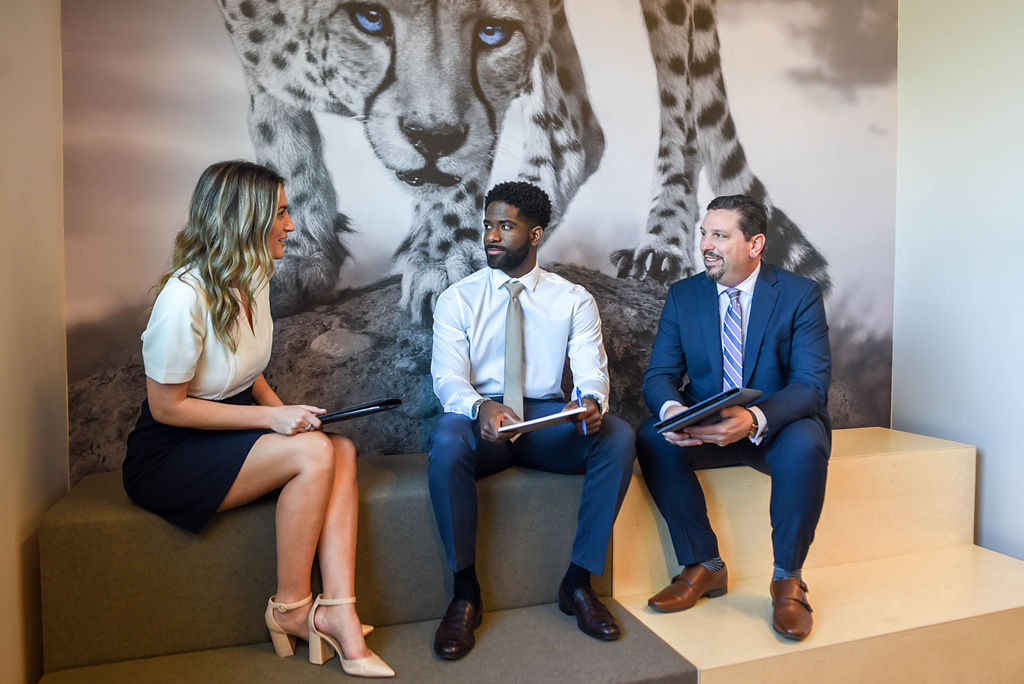The Importance of Mentorship in Work and When is it Mentorship, Sponsorship or Coaching
by Julie Turpin, Chief People Officer at Brown & Brown Insurance
I’m just going to say it — the word “mentor” is overused.
Not everyone who teaches you something professionally is a mentor; as leaders, we are not mentors to everyone we supervise. And yet, having a mentor, sponsor or coach has the power to catapult those engaged in the partnership to the next level of success.
Employees who are mentored are generally promoted five times more often than those who are not,[1] and 87% of mentorship program participants feel empowered by these relationships and feel an increase in professional confidence.[2]
Mentorship programs benefit companies as well. Employees who participate in mentoring programs are 49% less likely to leave.[3]
The professional relationships we build throughout our careers matter — whether you are the person receiving or giving support. I’ve benefited from these relationships at every stage of my career, and while I’m more often on the other side of the table these days, I continue to find tremendous growth in mentorship as a leader.
What kind of support are you looking for?
If you’re interested in finding or providing professional support, there are three main types of relationships to consider: mentorships, sponsorships and coaching relationships. The right fit for you will depend on your goals, needs and experience.
● A mentor provides guidance through regular meetings, shared experiences and open dialogue. They often act as a sounding board to their mentee as they work toward achieving specific goals or tackling challenges. (It could be as simple as recommending a year-end reading list that will change their life. 😉)
If you’re a leader, it’s not your job to be a mentor to every member of your team. However, you can give them the tools they need to grow by encouraging them to participate in a mentorship program. It is then the mentee’s job to carry the bulk of the work in the relationship, seeking support to fulfill their needs and executing on advice.
The mentor’s experiences greatly impact the advice they can provide, and in many cases is more important than their hierarchical status. In fact, at Brown & Brown, we facilitate a peer-to-peer mentorship program that connects individuals across our teams to build new partnerships and expand their networks based on interests and specializations.
● In comparison, a sponsor actively uses their influence to open up opportunities for their protégé. For this reason, the status and position of a sponsor are critical as they should have the ear of decision-makers within the company.
A great sponsor is someone who knows the strengths and ambitions of the individual and is willing to personally get involved in the next step of their protégé’s career, whether through recommendations or introducing them to their extensive network.
● A coach focuses on helping individuals master the skills they need to achieve their next goal. Common examples include public speaking, negotiation or management capabilities. While there are career coaches for hire, I have also found fulfillment in coaching members of my team in specific areas that once intimidated them and that they now enjoy.
3 ways to keep professional relationships dynamic
Let’s be honest — the work we put into our professional relationships involves effort and activities on top of our daily roles and responsibilities. We put in this extra work because we value our own success and that of our colleagues, but let’s make sure it’s worth it! Here are three ways to get the most out of these relationships:
1. Remember, your mentor, sponsor or coach doesn’t have to be your mirror. Nor should they be. My first mentor, George Watson, was a tall, kind, dynamic African American gentleman who noticed my potential. I didn’t even know that I needed a mentor at the time, but when he saw me struggle to handle a specific situation, what could have been a difficult conversation turned into a mentorship opportunity that helped me get to where I am today. I encourage my team to look for mentors who challenge their thinking and push them outside their comfort zones.
2. Bring curiosity and perspective to the relationship. This goes for both the mentee and mentor. Rewards can be reaped from both ends of the relationship, whether specific advice or seeing someone move beyond what they thought they were capable of. Curiosity and vulnerability will open you both up for immense growth.
3. Don’t be afraid to move on. The mentor you have in your 20s will not be the same one you have in your 30s. You’ll need different guidance and support at each stage of your life and career. Don’t forget to show your appreciation to a mentor when you move on and stay in touch – they’d love to hear about all the places you’ll go.
The Takeaway: At some point in our careers, we are all mentors, mentees, coaches and protégés. Remember:
- Know what you and your counterpart want to gain from the relationship. Based on your goals, you can determine if it’s mentoring, sponsorship or coaching.
- Some of the best mentorships are peer-to-peer. We have unique experiences and viewpoints, and there is an immeasurable advantage to expanding one’s network.
- No matter if you are the mentor or the mentee, approach the relationship with a growth mindset. You are never too experienced to learn or inexperienced to teach.
[1] Forbes “How Becoming a Mentor can Boost Your Career,” October 31, 2011.
[2] Moving Ahead “New UK research: Mentoring is improving gender balance in organisations,” September 7, 2017.
[3] Together “Skyrocketing retention rates by connecting employees with mentors.”

PurposeFULL Leadership
How Personal & Professional Growth Can Help You Lead A Fullfilled Life
by Julie Turpin, Chief People Officer at Brown & Brown Insurance
Subscribe to Julie’s PurposeFULL Leadership monthly newsletter and view this blog on LinkedIn here.








